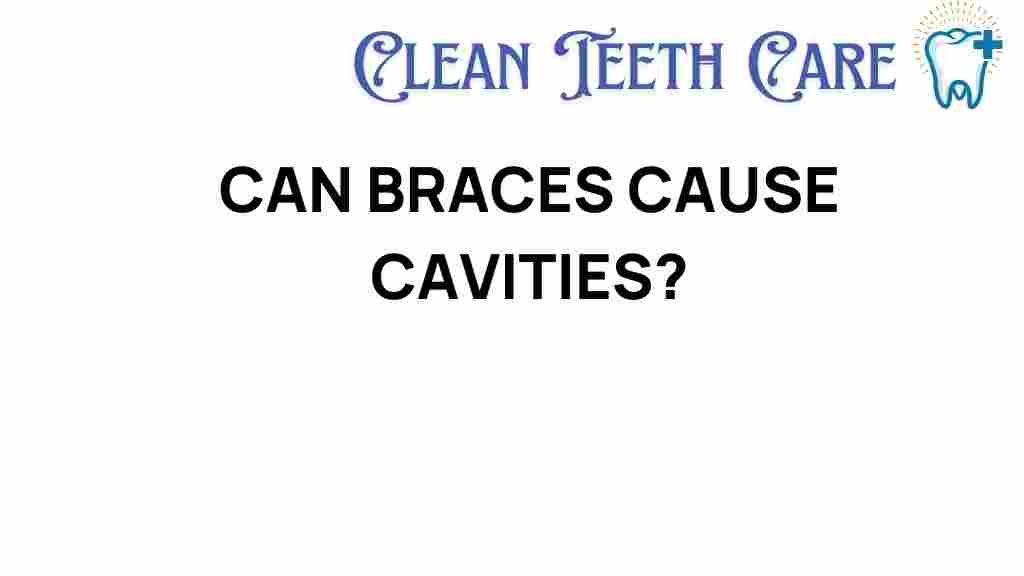Unveiling the Hidden Truth: Can Braces Cause Cavities?
Orthodontic treatment is a common pathway to achieving a beautiful smile, especially for kids and teenagers. However, many parents and patients often wonder about the potential drawbacks, including whether braces can lead to cavities. Understanding the relationship between braces, cavities, and oral hygiene is crucial for effective dental care during orthodontics. In this article, we will explore how braces can impact dental health, the importance of plaque control, and tips for prevention.
Understanding Braces and Their Impact on Oral Hygiene
Braces are dental devices used to correct misaligned teeth and jaws. They consist of brackets, wires, and bands that apply pressure to gradually shift the teeth into their desired positions. While braces are effective in creating a straight and healthy smile, they can complicate oral hygiene routines.
When braces are in place, it becomes easier for food particles and plaque to accumulate around the brackets and wires. This accumulation can lead to an increased risk of cavities if not properly managed. Let’s delve deeper into how braces can contribute to the development of cavities.
How Braces Can Contribute to Cavities
Braces themselves do not directly cause cavities, but they can create an environment where cavities are more likely to develop. Here’s how:
- Difficulty in Cleaning: The presence of brackets and wires makes it challenging to brush and floss effectively. This can lead to plaque buildup.
- Plaque Accumulation: Plaque is a sticky film of bacteria that forms on teeth. If plaque is not removed, it can harden into tartar and lead to tooth decay.
- Food Traps: Certain foods can easily get stuck in braces, providing a constant source of sugar for bacteria that produce acids, which attack tooth enamel.
Signs of Cavities During Orthodontic Treatment
It’s essential to be vigilant for signs of cavities, especially during orthodontic treatment. Some common indications include:
- Tooth sensitivity, especially when consuming hot or cold foods.
- Visible holes or pits in the teeth.
- Discoloration of the teeth, such as brown or dark spots.
- Persistent toothache or pain.
Maintaining Oral Hygiene with Braces
To prevent cavities while wearing braces, maintaining a rigorous oral hygiene routine is vital. Here are some effective steps to follow:
1. Brush Your Teeth Properly
Brushing with braces requires a slightly different technique:
- Use a soft-bristled toothbrush to avoid damaging the brackets.
- Brush at a 45-degree angle to clean around the brackets and wires.
- Spend extra time on each quadrant of your mouth, ensuring all surfaces are cleaned.
2. Floss Regularly
Flossing with braces can be challenging, but it’s essential:
- Use a floss threader or orthodontic floss to help maneuver between the teeth.
- Make sure to floss daily to remove plaque and food particles that brushing may miss.
3. Rinse with Mouthwash
A good antibacterial mouthwash can help reduce plaque and bacteria:
- Choose an alcohol-free mouthwash to avoid drying out your mouth.
- Rinse twice a day, especially after meals.
4. Regular Dental Checkups
Frequent visits to the orthodontist and dentist are crucial:
- Follow the recommended schedule for adjustments and checkups.
- Ask your dentist for fluoride treatments or sealants to protect your teeth.
Foods to Avoid with Braces
Diet plays a significant role in maintaining oral hygiene during orthodontic treatment. Certain foods can contribute to plaque buildup and increase the risk of cavities:
- Sticky Foods: Caramels, taffy, and other sticky candies can get stuck in braces.
- Hard Foods: Nuts, hard candies, and ice can damage brackets and wires.
- Sugary Drinks: Soda and sugary juices can promote plaque formation.
Healthy Alternatives
Instead, consider these healthier snack options:
- Soft fruits like bananas and applesauce.
- Yogurt or smoothies.
- Vegetables like cucumber and bell peppers, cut into small pieces.
Troubleshooting Tips for Common Issues
Patients with braces may encounter various challenges related to oral hygiene. Here are some troubleshooting tips:
1. Braces Causing Irritation
If braces cause soreness or irritation in the mouth:
- Use orthodontic wax to cover sharp edges of brackets.
- Rinse your mouth with warm salt water to soothe irritation.
2. Difficulty Flossing
If traditional flossing proves challenging:
- Try using a floss pick or an interdental brush designed for braces.
- Consider a water flosser as an alternative for cleaning between teeth.
3. Persistent Bad Breath
Bad breath can be a sign of plaque buildup:
- Increase the frequency of brushing and rinsing.
- Stay hydrated to help wash away food particles.
Conclusion: Prioritizing Oral Hygiene During Orthodontic Treatment
While braces are an effective treatment for achieving a straighter smile, they can pose challenges for oral hygiene, potentially leading to cavities if not managed properly. By adhering to a diligent oral hygiene routine, avoiding certain foods, and maintaining regular dental checkups, patients can significantly reduce their risk of developing cavities during orthodontic treatment.
Encouraging kids to take responsibility for their dental care is essential in ensuring their long-term dental health. Remember, the goal is to have a healthy smile that lasts a lifetime. For more information on dental care and orthodontics, visit this resource or consult your orthodontist for personalized advice.
In summary, braces do not directly cause cavities, but they can create conditions that promote decay. With proper dental care and prevention strategies in place, patients can enjoy their orthodontic journey without the worry of cavities.
This article is in the category Conditions and created by CleanTeethCare Team
